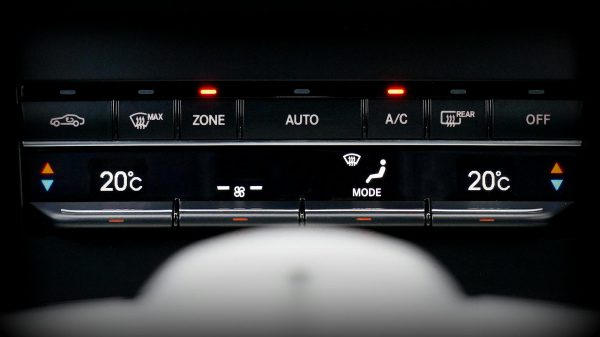Compliance Automation Tools: Stunning Drata vs Vanta vs Secureframe Showdown
In the ever-evolving landscape of cybersecurity and compliance, organizations are increasingly turning to compliance automation tools to streamline processes, reduce human error, and ensure adherence to regulatory standards. Among the most prominent players in this space are Drata, Vanta, and Secureframe—three platforms that have revolutionized how businesses manage compliance frameworks like SOC 2, ISO 27001, GDPR, and more. Each tool offers unique features and capabilities, making it essential for compliance officers, cybersecurity managers, and SaaS founders to understand their differences to make informed decisions.
This article delves into a detailed comparison of Drata, Vanta, and Secureframe, exploring their strengths, weaknesses, and use cases. By the end, you’ll have a clearer understanding of which tool aligns best with your organization’s compliance needs.
—
What Are Compliance Automation Tools?
Compliance automation tools are software solutions designed to simplify and automate the process of achieving and maintaining compliance with various regulatory standards. These tools help organizations:
– Monitor and manage security controls
– Collect evidence and documentation
– Generate audit-ready reports
– Identify gaps in compliance frameworks
– Reduce manual workload and administrative overhead
For businesses operating in highly regulated industries or handling sensitive customer data, these tools are invaluable. They not only save time and resources but also enhance the accuracy and reliability of compliance efforts.
—
The Compliance Automation Landscape: Why Drata, Vanta, and Secureframe Stand Out
The market for compliance automation tools has grown significantly in recent years, with Drata, Vanta, and Secureframe emerging as leaders. Each platform offers robust features tailored to different organizational needs. Let’s explore what makes each of these tools unique.
—
Drata: The Comprehensive Compliance Platform
Drata is a powerful compliance automation tool known for its user-friendly interface and extensive feature set. It’s particularly popular among SaaS companies and startups looking to streamline their SOC 2 compliance efforts.
Key Features:
– Continuous Monitoring: Drata continuously monitors security controls, ensuring real-time compliance.
– Automated Evidence Collection: The platform automatically gathers and organizes evidence required for audits.
– Customizable Frameworks: Drata supports multiple compliance frameworks, including SOC 2, ISO 27001, and GDPR.
– Integration Capabilities: It seamlessly integrates with popular tools like Slack, Jira, and AWS.
Strengths:
– Intuitive dashboard and easy-to-navigate interface
– Strong focus on SOC 2 compliance
– Excellent customer support and onboarding process
Weaknesses:
– Limited support for highly specialized frameworks
– Higher pricing compared to some competitors
—
Vanta: The Enterprise-Grade Solution
Vanta is a compliance automation tool designed for scalability, making it a favorite among enterprise-level organizations. It offers a robust suite of features tailored to complex compliance needs.
Key Features:
– Pre-Built Templates: Vanta provides pre-built templates for SOC 2, ISO 27001, HIPAA, and other frameworks.
– Risk Management: The platform includes advanced risk management tools to identify and mitigate vulnerabilities.
– Vendor Management: Vanta helps manage third-party vendor compliance, ensuring end-to-end security.
– Audit Preparation: It generates audit-ready reports and streamlines the audit process.
Strengths:
– Scalable for large organizations
– Comprehensive risk and vendor management tools
– Strong focus on enterprise needs
Weaknesses:
– Can be overwhelming for smaller teams
– Less customizable than Drata
—
Secureframe: The All-in-One Compliance Hub
Secureframe positions itself as an all-in-one solution for compliance automation, offering a balanced mix of features suitable for businesses of all sizes.
Key Features:
– Framework Support: Secureframe supports a wide range of frameworks, including SOC 2, ISO 27001, GDPR, and CCPA.
– Policy Management: The platform includes policy creation and management tools to ensure alignment with compliance standards.
– Training Modules: Secureframe offers employee training modules to educate teams on compliance best practices.
– Custom Workflows: Users can create custom workflows to match their specific compliance processes.
Strengths:
– Versatile and suitable for diverse industries
– Strong emphasis on policy and training
– Competitive pricing
Weaknesses:
– Less robust continuous monitoring compared to Drata
– Fewer integrations than competitors
—
Drata vs Vanta vs Secureframe: A Detailed Comparison
To help you visualize the differences between these compliance automation tools, here’s a side-by-side comparison:
| Feature | Drata | Vanta | Secureframe |
|————————|———————–|———————–|———————–|
| Supported Frameworks | SOC 2, ISO 27001, GDPR | SOC 2, ISO 27001, HIPAA, GDPR | SOC 2, ISO 27001, GDPR, CCPA |
| Continuous Monitoring | Yes | Yes | Limited |
| Risk Management | Basic | Advanced | Moderate |
| Policy Management | No | Yes | Yes |
| Training Modules | No | No | Yes |
| Pricing | Higher | Moderate | Lower |
| Best For | Startups, SaaS | Enterprises | Mid-sized businesses |
—
How to Choose the Right Compliance Automation Tool
Selecting the right tool depends on your organization’s specific needs. Here’s a numbered list to guide your decision-making process:
1. Identify Your Compliance Requirements: Determine which frameworks (e.g., SOC 2, ISO 27001) are essential for your business.
2. Assess Your Budget: Compare pricing models and ensure the tool fits within your budget.
3. Evaluate Scalability: Consider whether the tool can grow with your organization.
4. Check Integration Capabilities: Ensure the platform integrates with your existing tech stack.
5. Prioritize Ease of Use: Choose a tool with an intuitive interface and strong onboarding support.
6. Review Vendor Reputation: Look for customer reviews and case studies to gauge reliability.
—
Conclusion
In the showdown between Drata, Vanta, and Secureframe, each compliance automation tool brings something unique to the table. Drata excels in ease of use and SOC 2 compliance, making it ideal for startups and SaaS companies. Vanta shines in scalability and advanced risk management, catering to enterprise-level needs. Secureframe offers versatility and affordability, appealing to mid-sized businesses across industries.
Ultimately, the right choice depends on your organization’s size, compliance requirements, and budget. By carefully evaluating these factors, you can select a tool that not only simplifies compliance but also strengthens your overall cybersecurity posture.
Investing in the right compliance automation tool is a critical step toward building trust with customers, partners, and regulators—ensuring your business remains secure and competitive in a digital-first world.




